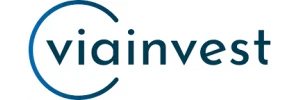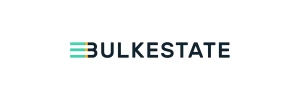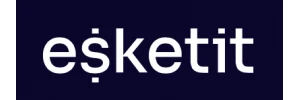Company Profile and Operational Footprint in the United States
FloatMe Corporation is a privately held fintech company, established in 2017, with its headquarters located in San Antonio, Texas. Founded by Joshua Sanchez, Christopher Brownbanks, and Ryane Clearybanks, FloatMe emerged with a mission to assist wage-earners in managing their short-term cash flow, particularly those vulnerable to costly bank overdraft fees and often excluded from traditional credit markets. Its business model centers on a subscription service that grants members access to small, interest-free cash advances, commonly referred to as "Floats."
The company has attracted significant investor interest, securing funding from prominent groups such as Foundry Group, ManchesterStory, Active Capital, and Samsung Ventures, alongside various individual fintech leaders. This financial backing underscores confidence in its approach to addressing a critical need for accessible, responsible micro-advances in the American market. FloatMe operates primarily through its mobile application, making its services readily available to a broad user base across the United States. Its geographic coverage extends to most states, though it does not currently serve residents in Connecticut, Maryland, the District of Columbia, or Nevada.
FloatMe's core value proposition lies in providing a quick financial bridge between paychecks without the burden of interest charges. By focusing on a subscription fee rather than interest, the company positions itself as a more consumer-friendly alternative to high-cost payday loans. This model is specifically designed for individuals with recurring income who occasionally face minor cash shortages before their next payday. The emphasis on responsible lending is evident in its avoidance of late fees, origination fees, or requests for voluntary tips, distinguishing it from some competitors in the burgeoning cash advance sector.
FloatMe's Products, Fees, and Application Process Details
FloatMe's primary financial product is its "Float" cash advance service. These are short-term, zero-interest advances, meaning users pay 0% interest and incur 0% APR on the borrowed amount. This transparency regarding interest is a significant draw for many users. The loan amounts are relatively small, starting at a minimum of $20, though first-time members might initially qualify for lower amounts. The standard maximum advance is $50 per pay cycle. These small amounts are intentionally designed to cover minor emergencies or prevent overdrafts, rather than to serve as substantial loans.
The repayment structure is straightforward: the advanced amount is due on the user's next scheduled payday. Repayment is typically handled automatically via an Automated Clearing House (ACH) transfer from the linked bank account. There are no provisions for extensions or rollovers, reinforcing the product's short-term nature. While the standard ACH deposit takes one to three business days to clear, FloatMe offers an optional instant deposit service, delivering funds within minutes for an additional fee. This instant transfer fee can range from $1 to $7 per transaction, varying based on the advance amount and desired speed.
The fee structure is transparent. Beyond the optional instant deposit fee, users pay a monthly membership fee, which typically ranges from $4.99 to $5.99 after a free trial period (which can last from seven to thirty days). Crucially, FloatMe charges no late fees, no origination fees, and does not solicit tips, a common practice among some competitors. There are no collateral requirements; eligibility is determined primarily by the user's bank account history and the presence of recurring direct deposits.
Applying for a FloatMe advance is streamlined through its mobile application, available on both iOS and Android platforms, or via its web portal for account management. The onboarding process requires linking a United States bank account through Plaid, a secure financial technology platform. Applicants must also provide their Social Security Number (SSN) or Taxpayer Identification Number (TIN) and a physical address. Importantly, FloatMe does not perform a formal credit check, instead relying on its proprietary underwriting algorithm. This algorithm analyzes transaction history and verified recurring deposits to assess eligibility and determine the appropriate float amount, making it accessible to individuals with limited or poor credit histories.
Mobile Experience, User Satisfaction, and Regulatory Landscape
The FloatMe mobile application is central to its service delivery, boasting strong user ratings on major app stores. The iOS app holds a 4.7-star rating on the App Store, while its Android counterpart on Google Play maintains a 4.6-star rating from over 58,000 reviews and has accumulated more than one million downloads. Users frequently praise the app's ease of use and the convenience of obtaining interest-free advances to manage immediate financial gaps. Beyond cash advances, the app offers several valuable features designed to enhance financial awareness, including account balance forecasting, spending analytics, a cash-flow calendar, and savings alerts. These tools help users gain better control over their finances and anticipate potential shortages.
However, common criticisms often revolve around the $50 cap on advances, which some users find too low, especially when considering the monthly membership fee relative to the small loan size. The waiting period for standard ACH transfers (one to three business days) is another point of contention for users needing funds instantly, though the instant transfer option is available for a fee. Eligibility limitations, particularly for first-time users, can also be a source of frustration.
From a regulatory standpoint, FloatMe is classified as a fintech cash-advance service rather than a traditional lender. This distinction means it is monitored by state financial regulators and is subject to broader consumer protection statutes, rather than strict lending laws that apply to banks or payday lenders. The company has faced scrutiny from regulatory bodies, particularly the Federal Trade Commission (FTC).
In November 2024, the FTC charged FloatMe with deceptive marketing practices, difficulty in canceling subscriptions, and alleged discrimination against recipients of public assistance. This resulted in a settlement requiring FloatMe to pay $3 million in refunds and implement transparent cancellation procedures and fair-lending practices. Following this, in July 2025, the FTC imposed additional requirements to cease deceptive "free money" claims and strengthen consumer disclosures. Despite these past regulatory actions, FloatMe has implemented consumer protection measures, including clear disclosure of fees and repayment terms, and automatic subscription cancellation if a float remains unpaid, ensuring no hidden late fees or interest accumulate.
Market Position, Competitive Landscape, and Customer Feedback
FloatMe occupies a specific niche within the rapidly expanding micro-advance segment of the fintech market in the United States. While it holds a modest share, it is a recognized player in the ecosystem of services designed to help consumers avoid overdrafts and manage short-term liquidity. The company competes with a variety of other fintech firms offering similar services, including prominent names like Earnin, Brigit, Dave, and Chime, many of which also provide overdraft protection or cash advance features.
Comparing FloatMe to its main competitors reveals key differentiators. Earnin, for example, often offers higher advance amounts, sometimes exceeding $100 per pay period, and operates on a voluntary tip-based fee model rather than a fixed subscription. Brigit provides advances up to $250 for a monthly fee of $9.99 and includes a suite of budgeting tools and overdraft protection. Dave offers advances up to $100 for a $1 monthly fee, plus optional tips, and integrates banking features. FloatMe, with its fixed $50 maximum advance and a monthly fee of $4.99 to $5.99 plus instant transfer fees, distinguishes itself through its explicit 0% interest policy, forecasting tools, and the absence of a tip solicitation model. All these competitors, like FloatMe, typically avoid formal credit checks, focusing instead on bank account activity.
Customer reviews and app store ratings generally paint a positive picture, with high marks for the app's utility and the benefit of avoiding expensive overdraft fees. Many users appreciate the straightforward, interest-free nature of the advances and the ease of accessing funds when needed. Success stories frequently highlight how FloatMe helps users manage small, unexpected emergencies without resorting to higher-cost alternatives like payday loans.
However, criticisms often echo the issues identified with the advance limit and the cost of the monthly fee relative to the small sum borrowed. Prior to the FTC settlement, difficulties in canceling subscriptions were a significant complaint. Other recurring complaints include the waiting period for standard ACH transfers and eligibility restrictions for new users, which can limit access for those most in need. FloatMe offers customer service via in-app chat and email, with user reviews on response times being mixed.
Practical Advice for Potential Borrowers and Future Outlook
For potential borrowers in the United States considering FloatMe, a pragmatic approach is essential. First, understand that FloatMe is designed for very short-term, small-dollar liquidity needs, primarily to prevent bank overdrafts or cover minor, unexpected expenses before your next paycheck. It is not a solution for ongoing financial difficulties or larger financial obligations. Assess whether the maximum $50 advance is sufficient for your specific need. While interest-free, the monthly membership fee of $4.99 to $5.99, coupled with potential instant transfer fees ($1-$7), must be factored into the actual cost of using the service. Over a year, the membership fee alone can add up, so consider if the value derived consistently outweighs this cost.
Eligibility hinges on having a stable income with recurring direct deposits into a linked United States bank account. FloatMe's proprietary algorithm analyzes this deposit history, so erratic income patterns might affect your qualification. If you require funds immediately, be prepared for the instant transfer fee, weighing its cost against the urgency of your need. Always compare FloatMe's offerings with those of its competitors, such as Earnin, Brigit, or Dave, to determine which service best aligns with your specific advance amount requirements, fee tolerance, and additional features like budgeting tools or higher advance limits.
It is prudent to be aware of FloatMe's past regulatory history with the FTC. While the company has implemented measures to address past issues regarding deceptive marketing and subscription cancellations, users should always read all disclosures carefully before subscribing. Ensure you understand the repayment schedule and how to cancel your subscription if the service no longer meets your needs. FloatMe can be a valuable tool for managing very tight cash flow, but it should be used judiciously and as a temporary bridge, not as a long-term financial crutch.
Looking ahead, FloatMe has indicated plans for growth and expansion. These include exploring partnerships with banks and employers to integrate cash advances more seamlessly at the payroll level, potentially expanding its reach and utility. The company also aims to broaden its product suite, possibly introducing features related to savings goals or credit building, which could provide more holistic financial support to its target demographic. As the digital lending landscape continues to evolve, FloatMe's ability to innovate while maintaining responsible lending practices and robust regulatory compliance will be key to its sustained success and relevance for American consumers.








